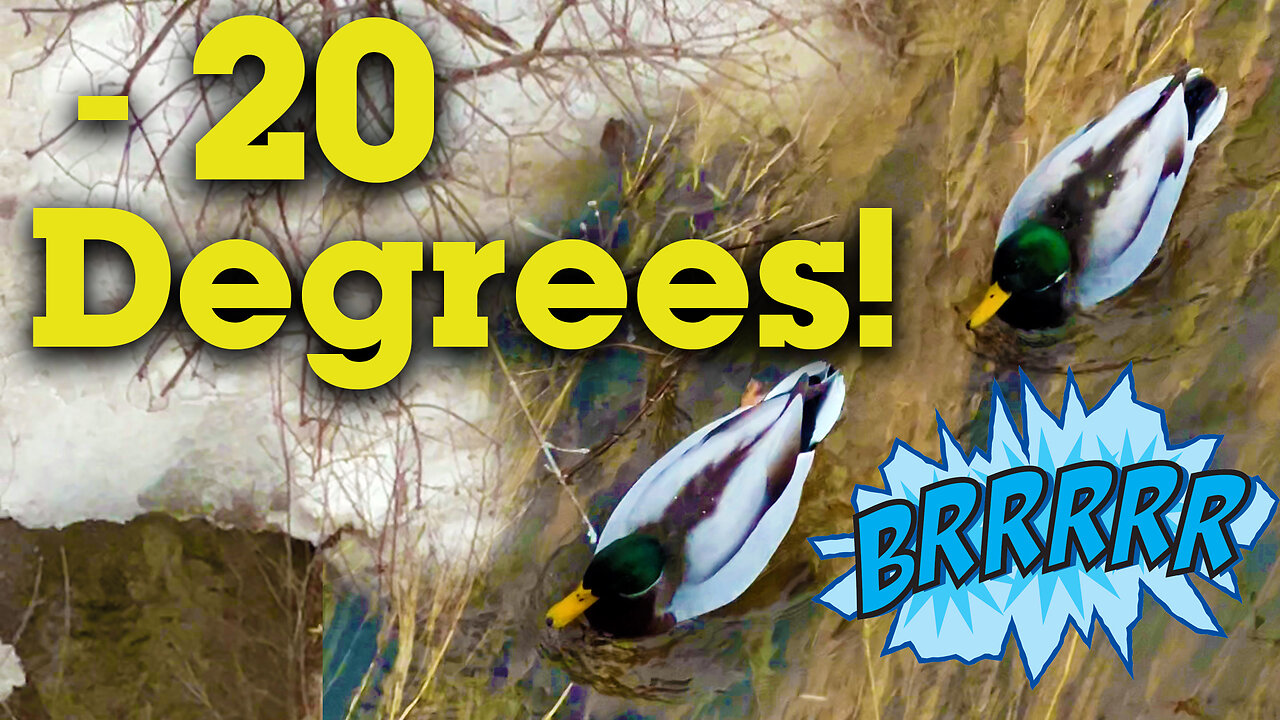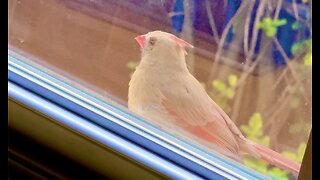Premium Only Content

FREEZING ducks? No way!
Minus 20 Degrees! Is that NICE weather for ducks?
I’m looking down from Ottawa’s Bank Street bridge through -20C (-4F) wind, snow and ice at the seemingly perfectly comfortable ducks below. Isn’t nature amazing?
How do ducks keep their feet from freezing in cold water?
We can understand how feathers protect water birds from almost freezing water, but how do they keep their feet from freezing?
Ducks adapt to cold weather by using a counter-current heat exchange system between the arteries and veins in their legs.
In ducks, veins that take blood from the extremities back to the heart, surround the arteries that take blood from the heart and pump it away to the extremities.
As the warm blood comes from the heart, it goes through the body and to the extremities, particularly the legs, and encounters veins. The warmth from the blood passes through to the surrounding vein and brings warm blood back to the body cavity.
As the blood enters the legs, it cools quite significantly. The feathered part of bird can be 25 C while the legs dip to 1 C. The bird therefore doesn't lose much heat to the environment.
The birds' legs also have tendons and bones instead of muscles and nerves like in mammals, which need more oxygenated blood.
Ducks can freeze to death in severe cold. Ducks are equipped with natural insulation in their bodies that helps them resist cold but prolonged exposure to extreme temperatures can lead to death.
Adult ducks are less susceptible to the cold than ducklings and, as a whole ducks are more resistant to cold than many other birds.
Here are three ways ducks protect themselves from low temperatures:
Possession of Preen Glands
A preen gland produces sebum (oil) and is located near the tail of ducks. When preening (i.e. rubbing their beak over their body to clean themselves and reposition their feathers), ducks spread the oil produced by the preen gland over their body.
Preening makes the feathers of ducks to become waterproof. Waterproof feathers permit very little or no amount of water (which easily gets cold) to reach the body of ducks.
So Many Downs
The down of birds is a type of feather that is soft with filaments scattered in every direction. Down feathers are below the feathers above. Down feathers are insulators as they trap air, and ducks can be warm even in harsh conditions).
Exchange of Blood Temperature in Their Legs
Ducks have feathers to protect their bodies from low temperatures. The only parts of the body of ducks without feathers are their legs.
Luckily, ducks (and a few other birds) are equipped with a marvelous exchange system in their legs. Their arteries and veins are so close, so when warm blood from their warm body flows into their legs, it increasing the temperature of the cold blood flowing into their body (from their legs). The ability to exchange blood temperature in their legs makes ducks walk on cold (or icy) surfaces for a long time without major impacts.
-
 0:04
0:04
AmplifiedLIFE
11 months ago $0.03 earned“Peep”-ing & Chirping Cardinal
115 -
 LIVE
LIVE
Bare Knuckle Fighting Championship
21 hours agoThe Bare Knuckle Show with Brian Soscia
85 watching -
 LIVE
LIVE
Grant Stinchfield
42 minutes agoRFK Jr. Ousts FDA’s Peter Marks—A Win for Medical Freedom and Government Accountability!
141 watching -
 LIVE
LIVE
The Dana Show with Dana Loesch
29 minutes agoThe Dana Show LIVE on Rumble! | 04-01-25
263 watching -
 LIVE
LIVE
Viss
2 hours ago🔴LIVE - PUBG Fueled with Tactics, Adrenaline, and Gasoline! - PUBG
278 watching -
 LIVE
LIVE
Benny Johnson
1 hour agoELECTION-MAGEDDON: Trump Vs. Obama 2028?! Third Term Matchup | MAGA on The Ballot
5,577 watching -
 1:01:21
1:01:21
VINCE
4 hours agoScott Presler On The Ever-Important Wisconsin Election | Episode 12 - 04/01/25
192K136 -
 LIVE
LIVE
LFA TV
14 hours agoLFA ALL DAY LIVE STREAM 4/1/25
3,706 watching -
 57:23
57:23
BonginoReport
6 hours agoEpstein Victim Reportedly on Deathbed—Still No Files - Early Edition w/Evita (Ep.172) - 04/01/2025
129K206 -
 2:05:59
2:05:59
Matt Kohrs
9 hours agoApril Fools Market Trickery, Breaking News & Trading $1M || The MK Show
38.6K1